Scott Jarvie
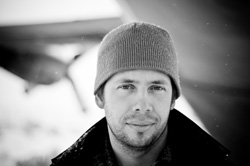
How did you get into photography?
Well, once upon a time I was going to BYU and I was taking random language classes. While I was taking French, I went to Belgium and worked at a supermarket to learn more French. While I was over there, we had open days when we weren’t working at the supermarket. Some of us would go on little trips and I would take my little point-and-click and I would click away. The other people in the group would say things like, “We don’t need to take our cameras because Scott will just take a lot of pictures. His are good.” This provided me with a little ego boost. I thought, “Mine are good. I enjoy this.”
After coming back home, my point-and-click camera broke. There was a snowstorm one day and I thought, “This is amazing. Why don’t I have a camera? This is killing me.” I happened to be at the mall near a camera store, so I decided to look at some little point-and-clicks.
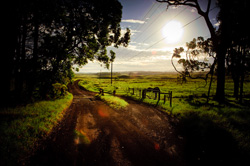
While I was there, I thought, “Let’s look at those big ones. I don’t have the money for them. I don’t even have the money for these small ones. But let’s just look.” I ended up walking out of the store with a large camera. I’m a spur-of-the-moment kind of shopper. It can get me into trouble, but this time it changed my life.
Later, I was home with the camera. One of my good friends looked at the Europe pictures I had taken and hung on my wall, looked at the big camera in my hand, and said, “You should do our engagement pictures.” I said, “Why not?” I knew that if I didn’t do a good job, they could hire a real photographer later. What was there to lose? I’m the type of person who is crazy enough to agree to take on a wedding, never having done one.
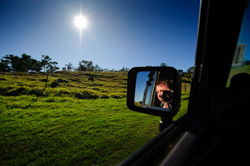
And it worked. I started doing more, to the point where I realized that, as a student who didn’t have many bills, I didn’t need a job as long as I worked one or two weddings a month.
What specific steps did you take to become a professional photographer?
I think that I probably spent more hours at it than most. I dedicated all my time to it. I wouldn’t see the outdoors for one or two days if I was editing. There were days last year when I literally woke up, walked to my desk, and stayed at it until I went to bed. The only times I’d leave would be to grab a meal or two and use the restroom. The whole day was spent in front of the computer. Then, I would continuously find reasons to go out and shoot something.
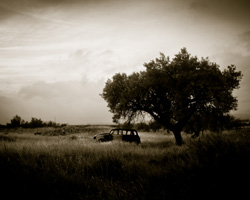
I look back at it now and realize that I was in the perfect position at the time. I didn’t need a lot of money. I wasn’t supporting a family. There was nothing going on. I didn’t have to make a certain amount of money. I didn’t have huge expectations. I was just doing it. I was taking pictures.
How have social media sites like Facebook been helpful in getting your name out?
Facebook became popular around the same time that I started, so I’ve been using it since then.
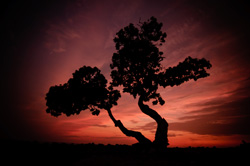
The ability for people to put the pictures that I took of them in their online photography gallery has been a significant benefit to my business. Everyone sees what I’ve been doing. Their friends see what I’m doing, and that has made a big impact.
As a wedding photographer, what tricks do you use to make the wedding photos unique for each couple?
I think people underestimate the importance of the interaction between the photographer and the personality of the client. I’m known for the editing aspect, and the pictures are good, but bringing out the personality of the couple is what I aim for. I’ll sit around with each couple for five or ten minutes before a shoot and just joke around. I ease into the photo shoot and really try to get a feeling for what kind of pictures are going to be best for them.
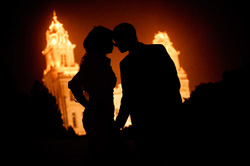
Especially with wedding photography, it’s important that the couple’s personality be in their photos. One of my favorite compliments is when someone looking at a couple’s gallery says, “Oh, Barbara Sue, that’s so you. That is totally you.” I love hearing that because that’s what I hope to do.
My other favorite compliment comes when a member of the wedding party comes up to me at the end of the night and says, “You did such a great job,” even though they have not seen a single picture. I even asked someone about that once, and they replied, “It’s your personality—it’s perfect for you, and you just handled everyone so well. It looks like you’re having so much fun.” People love seeing the photographer happy and I guess that makes them happier, too.

What other photographers have influenced your work?
I never studied anyone in particular. When I started off, I loved technical stuff. The more buttons the camera has, the happier I was. For me, I wanted to figure it all out for myself, use trial and error to figure out the camera. That’s why I spent so much time learning, and that’s why, now, I can teach someone the same lessons I learned, but in a fraction of the time.
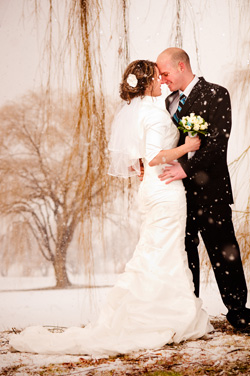
It was the same kind of thing for the aesthetics. I tried to figure it all out myself. And perhaps it was a great benefit for me that I never studied anyone in particular. As for now, though, a year and a half ago I started hanging out with a lot of different photographers on Twitter and on Facebook. Just being around them has really pushed my photography beyond what it was before.
What about that has pushed your photography further?
I now have a community of friends that I can share my pictures with beyond all the friends I had before, the ones that always said “ooh, ah” to everything I did. These new friends are photographers and they “ooh” and “ah” a little bit less readily. Now I push myself to share even better stuff with these other photographers.
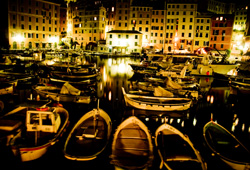
Tell us about your study of languages and how that has influenced your photography.
What I really wanted was just know a lot of languages. It got me to Europe, where I discovered that I liked photography. It took me to other fun places. Then that love of travel and culture got me to the point where I discovered that, one of these days, I want to go around taking pictures in different places around the world. The combination of those two ideas was a motivating factor. It motivated me to get better so I could take pictures around the world.

How many countries have you visited in order to take photographs?
I’ve been to about 22 countries. But I’d say five or six of them are from before I was a photographer. I don’t do a lot of photo shoots out of the country. I did the Europe trip and I’ve been to Mexico, Peru, and some other places since then and done pictures, but I do a lot of photo shoots around the United States. Last year I did 46 weddings and 14 or 17 of them were out of Utah.
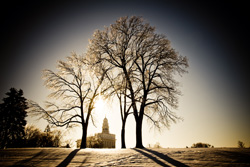
Speaking of taking photos around the world, tell us more about your Envision the World project.
Envision the World is an educational and historical project. The point is to help other people learn about other countries and other cultures—to see them, to know them, to learn how they live, who they are, what they do, their surroundings, the trees, the mountains, the animals, the streets that surround them, everything, so that someone can really educate themselves. They say a picture is worth a thousand words. Well, if you could see every aspect of a society, of any town, any place, and to see all, it would be like a big group project where everyone shares their vision of the world and all these different pieces. The project isn’t about money. I feel like it needs to be done.

It would be more than just my own photography. I started it when I visited Europe in 2006 and I took around sixty thousand pictures. I’m very documentative in nature, so I’m not just out for the one picture. I’ll take pictures of everything. I’ve got a lot of pictures whether or not anyone else contributes. But they will—they’re going to contribute mass amounts of pictures. There’ll be millions on there in no time.

Will the photos you took during your travels also be part of the Envision the World project?
Yes. When I went to Hawaii I spent two extra weeks beyond the wedding and I just stayed there and took pictures. I’ve also gone to Mexico a couple times to help charity, and I took pictures there. If you look at a picture and see that it can help someone envision that portion of the world, then that picture can qualify for the project (as long as it’s in focus and it’s decent).

You recently launched Jarvie Digital University, an internship study program for people who want to become better photographers. What gave you the idea to start this?
The thing about having interns is that you get so caught up having them do different types of things, and it is all stuff that you could do yourself. I’ve worked on approximately 500,000 pictures in my life—so many that I’m very fast and very efficient. But, if I spend a lot of time training these interns, I don’t want to have to spend quite as much time teaching each individual. I figured that I could create a system where as students are trained, they share what they’ve learned with the next batch of students. As they improve their abilities, they’ll take on more and more roles of paying it forward to newer students, solidifying their new skills as they share them.

When I’ve taught before, the students sometimes felt they were good to go, they were off on their way, and I was glad I could be of service. It’s really fun for me to see where they’re at now and how much they’ve progressed. I enjoy it. I like being around other people and I like the teaching aspect of photography as well as photography itself.
I think I’ve struck something that could really work, and people seem to be really excited about it. With good reason, I think—no one else is crazy enough to do something like this. And it’s going be a lot of fun.

You said you were trying to recruit a lot of different authors. How do people become involved in this project?
Pretty easy. They just meet up with me, and every once in a while I’ll have a little training session to show them how to put together the blogs. It’s really easy but there are some questions that should be resolved and answered. That way they can see how I do it on a first-hand basis, so that they can do it fast.
If photographers want to be featured on the blog, there’s a link to be highlighted. They just need to click on the link to send us an email, fill out a little survey and give us explicit permission to use their pictures on the blog. Everyone’s usually good with that but we just want to make sure all the bases are covered. I’ve never had anyone say no. They’re all really excited about it. It’s been fun.
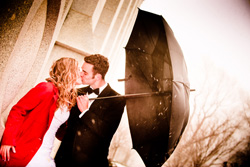
You are a busy guy.
I’ve got lots going on, don’t I? I’m cutting my goals of weddings though; this year my goal is 25, down from 46 last year. I’m focusing on doing more on the weddings—spending more time, delivering higher quality, higher caliber, learning tons so that the wedding photographs turn out much better. And you know, honestly, they’re more expensive, so I won’t be as popular in Utah.
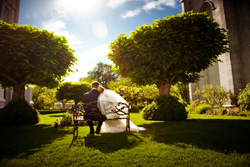
How has the gospel influenced your work as a photographer and also as a teacher of photography?
I like to try to do everything in a principled-based approach. I don’t believe in just saying: “It’s good business.” I think that’s a cop-out and it can be very destructive when someone excuses themselves with “I think it’s good business.” Almost all these principles I learned at church, through the interpretation of the scriptures, or from church leaders. Where we learn that the purpose of life is not to get more money but that we’re supposed to help others, we learn the value of real education. It’s not about a piece of paper that says you’re educated. It’s about really gaining light and knowledge, and at the same time, expanding our talents. It teaches us that we shouldn’t hide our talents but we should share them, and that they should be beneficial to other people. We don’t always need to prostitute our skills; we can just share them and give them to other people.
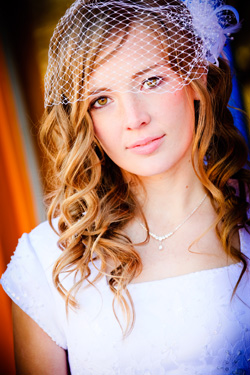
How do you see your work building the kingdom?
A lot goes back the Envision the World project. I feel that the educational benefits of this project will inspire people. We understand in the Church that art and culture are very important. We look kindly toward them. I feel that I’m building these up: art, education, and culture. I’m helping people to learn. It’s not as direct as some other methods, but I feel like my own work is very important.
I have a special connection to the Envision the World project. It’s not a business deal to me—I feel a stewardship over it. I have no idea where the idea came from. It came, and I wondered, “Why me?” It amazed me. I felt a spiritual connection to it, that it was important that I get this done, and that if I didn’t get it done I was letting someone down. My opinion is that someone up there thinks that it’s important.
What kind of advice do you have for other LDS photographers?
The other photographers I have known and seen become successful have a couple of qualities in common. They have a passion, and not just a verbal passion but a passion that extends and makes them active in it. They spend a lot of time, and they just do it. They’re not setting goals like “This month I want to spend 40 hours,” they’re just so passionate that they spend 40 hours on their own. They don’t have to have some goal.
Everyone talks about making goals. You’ve got to have the right mentality for that. Sometimes that’s the worst thing you can do because as soon as you don’t hit your goal you wonder what’s wrong with you and that you are never going to accomplish your goal or amount to anything. I think personally most everyone can get to the point where they’re good photographers. It’s these passionate individuals who always seem to find a way to make it happen in their own unique way. I didn’t have formal training, and I didn’t have people there to help me out.

There are so many ways nowadays for people to learn it faster, like online training with Jarvie Digital University, but I think that passion and love for photography is going to get them going. You know what, it takes a lot of time, and that is sometimes inhibitive for certain people who have other jobs, and other lifestyles, so they’re going to have to be creative and unique. And secondly, knowing what a good picture looks like will help a person be a good photographer. You can learn how to create good pictures. The types of people who like art are good photographers. Creativity isn’t just photography. It’s found everywhere.
I guess I should also tell how I kind of cheated. When I got back from Europe and I realized that I was pretty decent at photography, I also realized that it probably had something to do with the fact that nearly every person in my family is an artist. My dad is a full-time artist. My sister is a photographer, and my brother is one of the most artistic, creative people I know. He can do anything and everything. I have another brother who does art type stuff—pottery, so it just seems like it kind of runs in the family. So perhaps I cheated. I didn’t think about it because, growing up, I couldn’t even draw a stick figure. I figured that photography was my art, that I couldn’t do the regular types of art. But I realized that it wasn’t so much that I could create art, but that I recognized art. So when I’m wandering around taking pictures, clicking away, I notice that the second click is really good looking. I can recognize and understand art, and then the technical side of me—the button pusher—recognizes how to recreate it. It just becomes part of me. Like a baseball player swings the bat, it just gets to the point where it’s ingrained inside of me and I can recreate what worked. That’s why my style of learning works for me.

Through heredity, I gained the ability to really understand and know how to make what looks good, and the ability to recreate it. I don’t do commercial work—the kind that requires a lot of thinking, coming up with the really creative concept, and then going and recreating what you thought of. I can’t picture those things. I just go around with my camera and I look for good pictures.
What are your plans for the future?
I see myself doing a lot of education. And I see myself almost completely doing Envision the World project work. And having a family, and you know, enduring to the end, and living happily ever after. ❧
